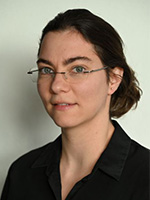IEA HPT Annex 59
Drying processes are widely used in industry, commerce, and households, accounting for a significant proportion (10–25%) of industrial energy consumption. The basic principle of drying has remained unchanged for thousands of years: it is usually carried out convectively using heated air, which absorbs moisture and is discharged as energy-rich exhaust air. Conventional drying systems mainly use fossil fuels and release most of the heat they contain into the environment unused. Modern systems, on the other hand, rely on closed circuits and heat recovery. Heat pump technology plays a key role here: it allows the energy bound during evaporation to be returned to the drying process. This means that the exhaust air is simultaneously dehumidified and reheated – with significantly higher energy efficiency and sustainability.
Project goals
This project investigates the potential of heat pumps for energy savings in various drying processes. The aim is to support key target groups – specifically industrial and commercial enterprises, technology manufacturers, planners and installers of heat pump systems, and energy consultants – with practical information on drying processes/technologies, optimal process design, and optimized design, integration, and operation of heat pumps. The recommendations are primarily based on experience gained from demonstration projects. The results are compiled and made available in fact sheets. This is intended to raise awareness of the use of heat pumps, overcome existing barriers to their widespread use, and increase the visibility of national research and development activities in this area.
Role of the AIT
AIT is the project manager of the national project and, as such, responsible for national project activities. In addition, the national project manager, Verena Sulzgruber, is also the Operating Agent of the international IEA HPT Annex 59 project.
Funding
This project is being carried out as part of the IEA research collaboration on behalf of the Federal Ministry for Innovation, Mobility and Infrastructure.
![[Translate to English:] Digitalisation and HVAC Technologies Symbolfoto: Das AIT ist Österreichs größte außeruniversitäre Forschungseinrichtung](/fileadmin/_processed_/8/1/csm_GettyImages-18655_5a3dffca27.jpg)



